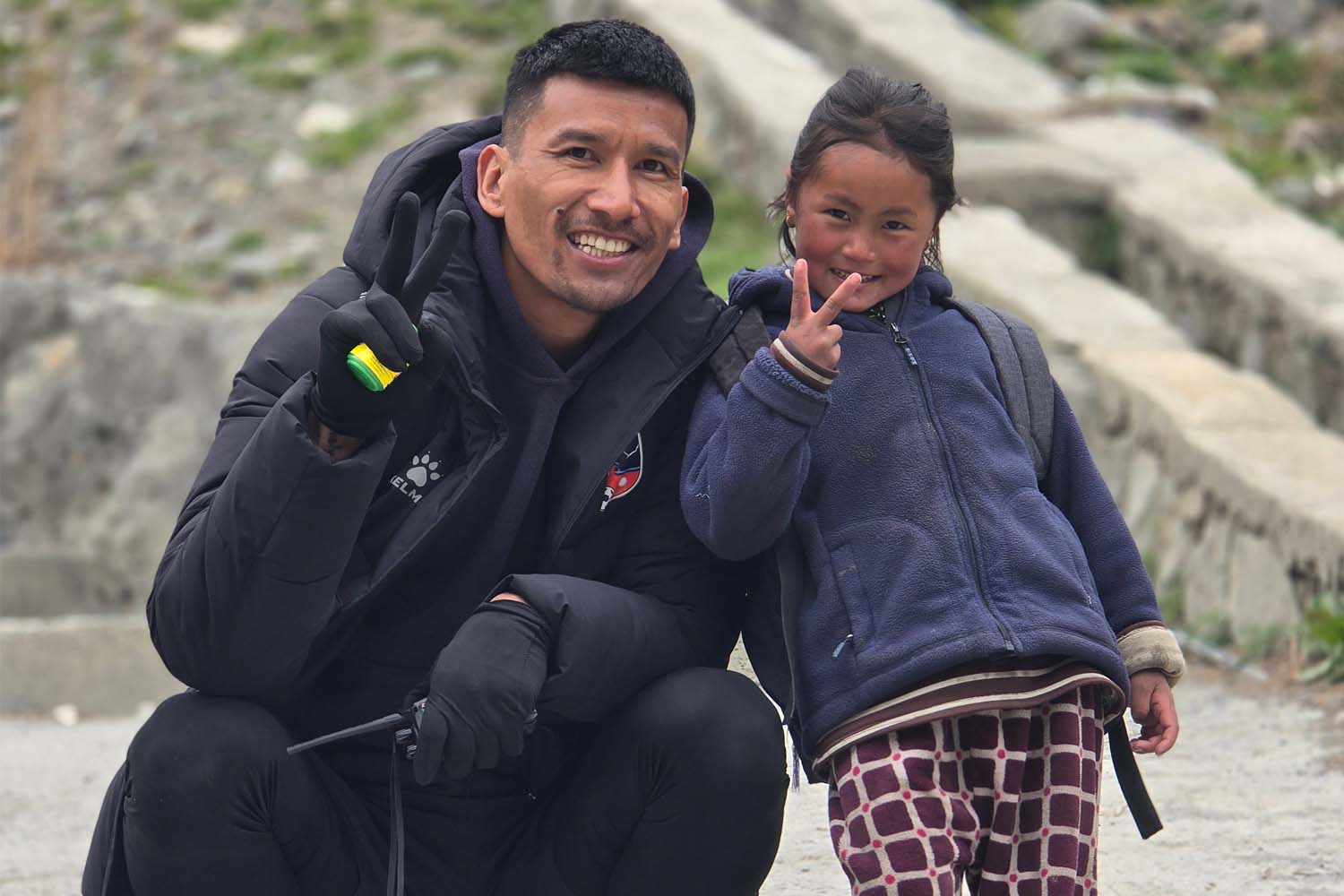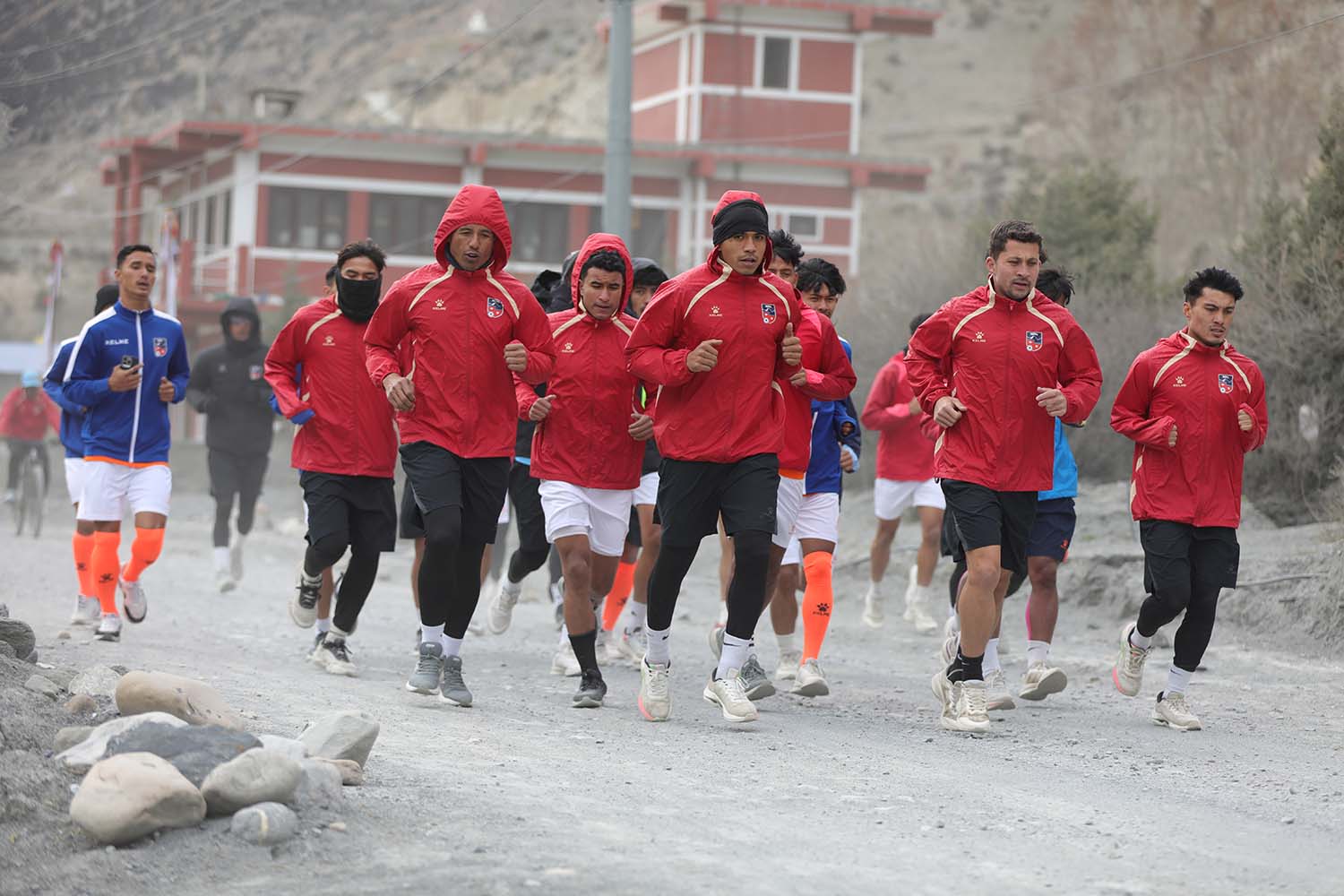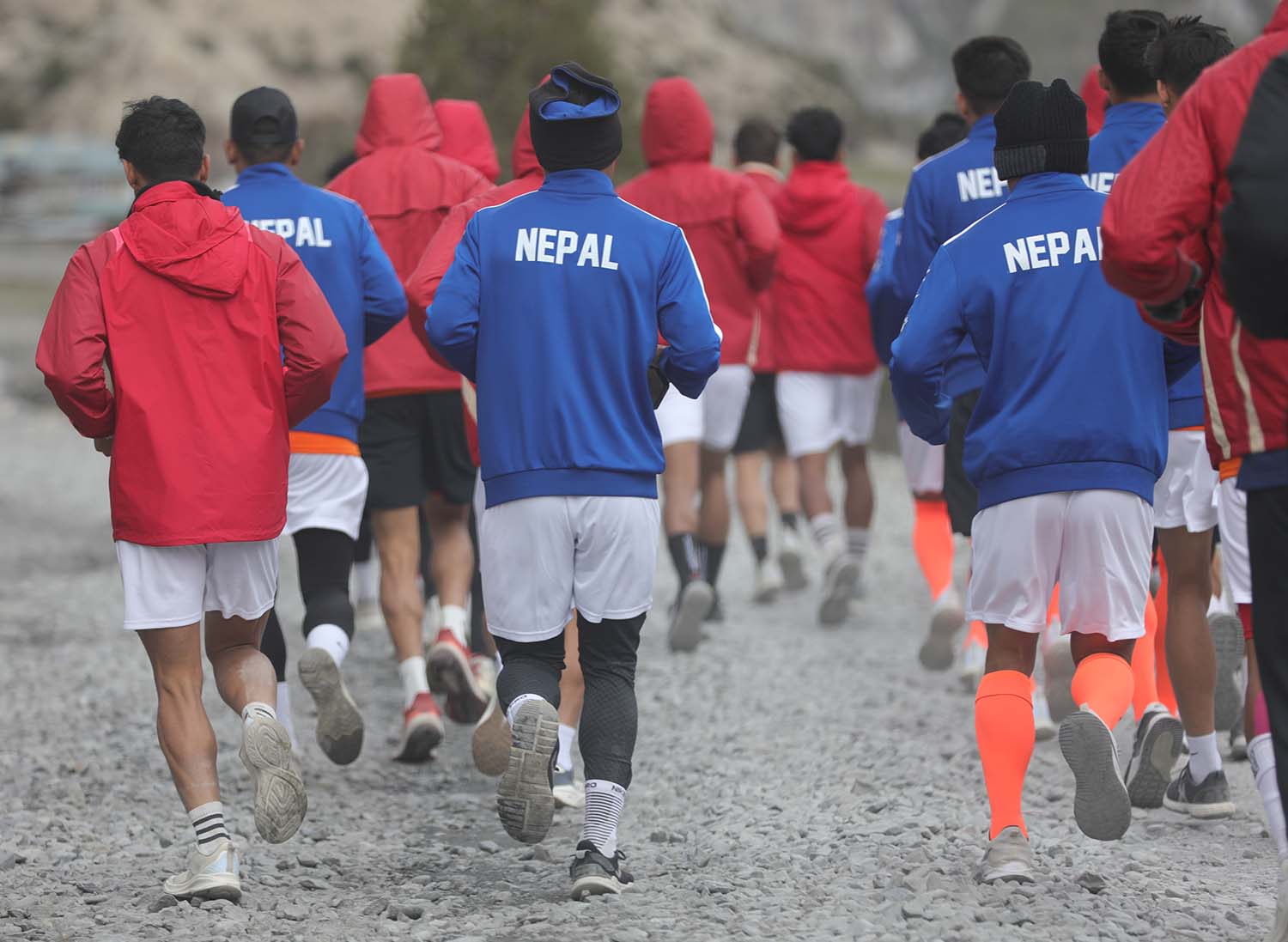Sports
Can Nepal be Asia’s high-altitude sports capital?
A high-altitude training centre could generate jobs, enhance Nepal’s international sporting reputation, and provide a sustainable tourism model.
Matt Ross
The Nepal men’s national football team recently completed a transformative high-altitude training camp in the Himalayan village of Manang at over 3,500 metres above sea level. While the training grounds offered an undeniably breathtaking backdrop, we were not there for the views. We were there to unlock performance advantages that science—and our mountains—can uniquely offer.

Training at high altitude forces the body to adapt to lower oxygen levels. In response, the body produces more red blood cells to transport oxygen more efficiently. Over time, this increases an athlete’s aerobic capacity and endurance. When players return to sea level after altitude exposure, they often find themselves able to run longer, recover faster, and perform more explosively. It’s a natural performance boost—one earned through discomfort and disciplined training.
Our upcoming international fixtures against Hong Kong and Laos, both nations based at sea level, will test us physically and mentally. But Manang gives us an edge. We’re conditioning our bodies to thrive in oxygen-thin air, so when we play at lower altitudes, our players should feel stronger and sharper. Matches are often decided in the final 15 minutes, when fatigue sets in. By pushing our limits in the Himalayas, we’re aiming to finish stronger than our opponents when it matters most.

But this is about more than short-term gains. Nepal is one of the few countries in the world with the perfect conditions for a permanent high-altitude training centre. While countries like Kenya and Ethiopia have built world-renowned endurance hubs at 2,000–2,400 metres, Nepal offers terrain, climate, and elevation that far exceed those levels. We could attract elite athletes and professional teams from around the world looking to prepare for high-stakes competitions—from marathons to football tournaments.
Imagine this: European and Asian clubs arriving in Nepal for pre-season altitude training. International federations bringing Olympic hopefuls to acclimatise in our mountains. Sports scientists, physiologists, and coaches converging on a Nepali training village that blends cutting-edge recovery facilities with traditional Himalayan resilience. This isn’t a pipe dream. It’s a viable future—and one with immense economic and cultural value.

Sports tourism is one of the fastest-growing niches globally. A high-altitude training centre could generate jobs, enhance Nepal’s international sporting reputation, and provide a sustainable tourism model tied to health, science, and elite performance. For local athletes, it means access to world-class facilities and role models. For the global community, it offers a new frontier in performance preparation—with unmatched views. (It was thus amazing to hear the Nepal government announce high-altitude sports stadiums in Solukhumbu, Mustang, and Jumla during Thursday’s budget speech.)

Our training in Manang laid a foundation for both immediate improvement and a long-term vision. Our players are learning to suffer together, push limits, and find pride in representing a nation with unique geographic gifts. But I also want to spark a broader conversation: Can Nepal become Asia’s high-altitude sports capital?
I believe the answer is yes. We have altitude. We have the talent. What we need now is belief, infrastructure, and partnership. If we build it with care, vision, and collaboration, they will come.






 21.12°C Kathmandu
21.12°C Kathmandu





